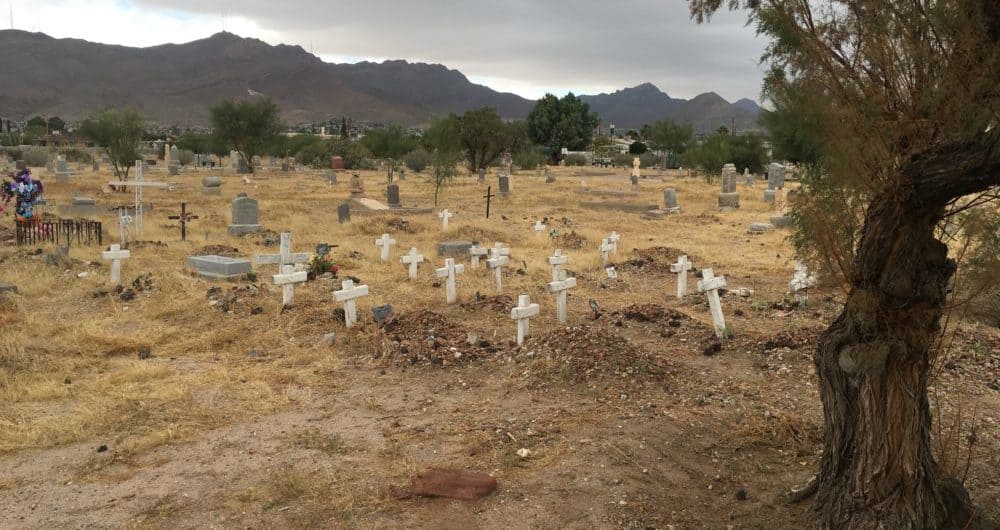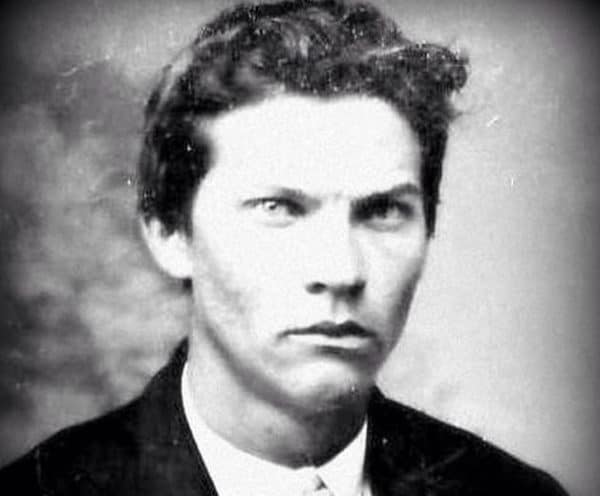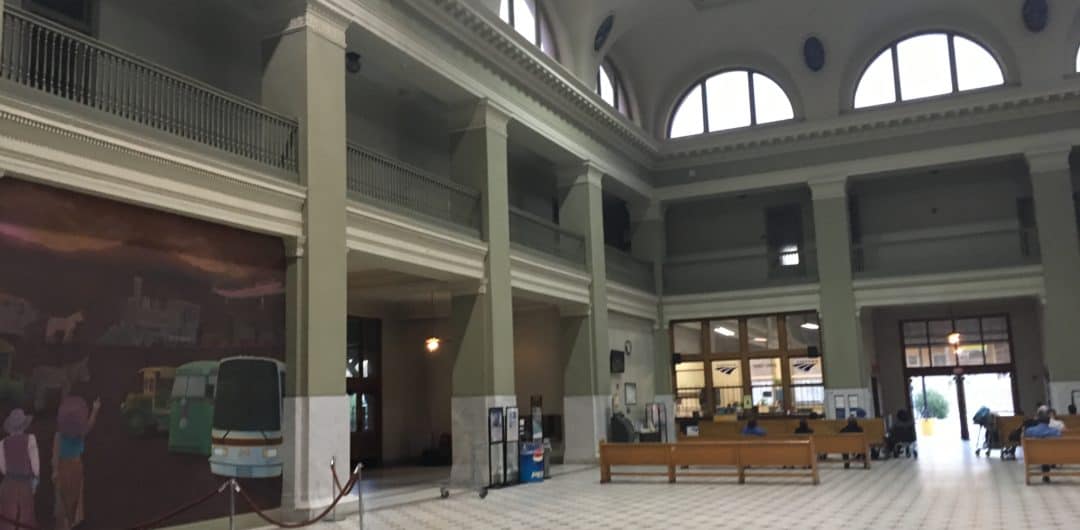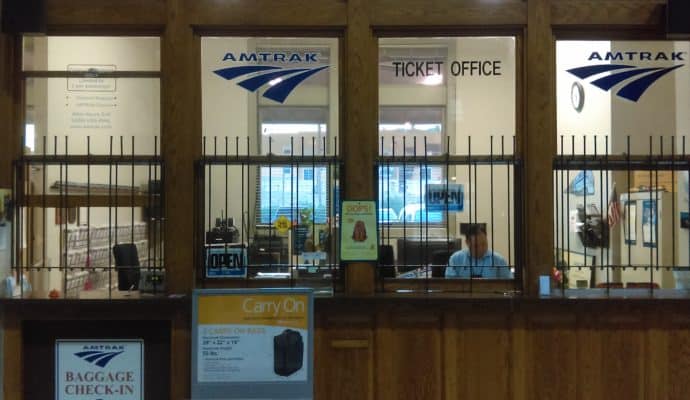THIS POST MAY CONTAIN AFFILIATE LINKS. PLEASE READ MY DISCLOSURE FOR MORE INFO.
Why visit old El Paso?
If you think of El Paso only in terms of drug cartels or as the western bookend for Interstate-10 in Texas, you’re missing something special. Old El Paso is less tourist-laden than San Antonio and packed full of riveting history as we unexpectedly discovered.
It was my son Shane’s 29th birthday and we were catching a 5:30p flight out of Houston Hobby for El Paso to position ourselves to start our West Texas rail trip the next day.
Why El Paso? Thee Oh Sees were playing that night at the Low Brow Palace next to University of Texas at El Paso. All we had planned for El Paso was this concert, a visit the next morning to Concordia Cemetery and some enchiladas at L&D Café. Then we would catch the Sunset Limited going east to Alpine, the real jumping off point for our adventure.
Curtis the lovelorn Cubs fan
At the El Paso airport, an Uber driver named Curtis arrived in minutes. A transplanted Chicagoan, Curtis was watching the Cubs on TV at a nearby hotel lobby. He’d move to Texas to be closer to his son who had retired from the military in San Antonio. Curtis made the move to El Paso for the “worst reason in the world” – a woman. That relationship ended 30 days later, but at least Curtis had lived to tell the tale. We discovered that was not the case with another famous old El Paso romance.
El Paso hotel hospitality delights
Searching trusty TripAdvisor, we’d booked the Holiday Inn Express on the edge of downtown. No high expectations here, especially with the featureless, blocky exterior but it ultimately checked off all the boxes for the nuances that make a good hotel experience. A coffee-maker in our room, walking distance to funky and colorful bars and restaurants, free breakfast with lots of protein, and the very best part – soft vertical lighting down the sides of the bathroom mirror. Nothing destroys a good feeling quicker than seeing yourself in a poorly lit bathroom mirror.
The hotel clerk offered to shuttle us around downtown, but we wanted to walk after hours on the plane.
A big band at a small place
A cold wind was blowing down off the Franklin Mountains so we slipped into an old storefront that housed a beer pub called Craft & Social. The space was dark, long and narrow. A tiled wall with beer taps and a big wooden bar took up most of the narrow back wall. A trio played in the front corner by the old plate glass windows. The band outnumbered the patrons until Shane and I walked in. That surprised us because it was 8:30 pm on a Wednesday night. The pizza pubs and bars nearby had respectable crowds from the university just blocks away.
A beer nirvana

We took seats at the bar, ordered food and beer and settled in. The furnishings were rustic and spare; the menu was limited but good. And the beer – ah the beer. Turns out the Craft & Social was started by a local man who had lived in Belgian for a while and got a taste for Trappist ales, beer brewed in French monasteries. The beer selection was carefully considered for each season.
What kind of music is this?
The trio was playing standard soft jazz when we arrived – guitar, bass and piano. Suddenly it came alive with some original music that you couldn’t label. More instruments came out – a saxophone, classical guitar, and more. The group was named Golden Groove and led by saxophonist/composer, Daniel Rivera who was also director of the Sun City Symphony Orchestra. It felt intimate with these talented musicians playing for our little group on a cool November night in the dark little pub. Try listening to the selection above while you read about the rest of our visit.
I passed on the noise rock of Thee Oh Sees, content to walk back to the hotel. This night had been a precursor to other surprises we would discover here in El Paso del Norte.
How to spend three hours in El Paso
We figured we had from 11a to 2p to explore El Paso and have lunch before we headed for the Amtrak station for 3:30p trip to Alpine. A friend and fellow blogger, Dana with Tripchandler had recently been to El Paso and told us to visit the Concordia Cemetery and catch lunch at L&J Café, locally known as the place by the cemetery.
Concordia Cemetery

From the Concordia website, we found out that over 60,000 El Pasoans were buried there. That included outlaws, buffalo soldiers, Texas Rangers, Civil War veterans, Mormon pioneers, and Chinese immigrants from the railroad building days. Concordia is recognized as a Texas State Historical Cemetery.
Another Uber driver arrived at the hotel to take us to the cemetery, mystified that we would want to spend time in such a place without family there. We missed the main entrance to Concordia which made our driver even more concerned for our safety. It was a happy accident. We entered the massive boneyard at the most remote gate. After we assured our Uber driver that we would be okay, she dropped us off amid broken tombstones and melting adobe and cement crosses that showed their barbed wire infrastructure.
The forgotten part of Concordia Cemetery

We walked through and around a dusty, jumbled expanse of graves. Some were painted bright colors, others covered, or bordered with small stone. A couple of plots had crosses made out of plumbing pipe or other random materials. Plastic and dying flowers were on a few of the many graves in this untended area. Dia de los Muertos had just passed and those residents who still had people living in the area were honored but many of the other graves were forgotten and blowing away. The mountains beyond were visible from every section.
Getting Our Bearings
After an hour or so, we got our bearings and started heading to the more visited part of Concordia. We passed a mini-boot hill with rows of white crosses and heaped mounds of earth over each burial site. Ahead we saw the memorial to the Buffalo soldiers and their resting places. Finally, we found where El Paso had interred the most infamous man to now called Concordia home.
“I never killed a man that didn’t need killing” – John Wesley Hardin

John Wesley Hardin was a preachers’ son and considered the most deadly gunman in Texas. Hardin was a handsome man who viewed himself as a pillar of society. He slaughtered at least 30 people, many indiscriminately, starting at 15 years old when he killed a black man during a chance meeting.
A murderer and an attorney
Hardin went on to dispatch lawmen, Union soldiers, opposition leaders along with common citizens, all whom John Wesley deemed deserving of death. In 1878, he went to prison for the murder of a deputy sheriff in Brown county. In prison, he studied law and theology and by 1894, he was out of prison with a pardon and admission to the Texas bar.
Love undid Hardin

He came to El Paso in 1895 to establish a law practice and fell in love with Beulah. Beulah was the wife of one of Hardin’s first clients, Martin M’rose (also called Morose). In June, Hardin hired some lawmen to kill M’rose but apparently failed to pay all of the lawmen for services rendered. In August, one of lawmen showed up at the Acme Saloon to address the matter. Hardin died instantly after being shot while drinking.
Opposed in life, close in death

M’rose is buried five feet from Hardin. His marker reads “Polish Cowboy – died at the hands of others” which intrigued me. At the time of our visit, I did not know about the connection between the two men aside who were sharing nearby plots. M’rose was vilified for many years as a cattle rustler and a murderer but after much research, historian Dennis McCown thinks he was a good man and cowboy who chose the wrong attorney. To find out more about Martin and Beulah’s story, go to http://www.historynet.com/interview-with-author-dennis-mccown.htm
Beer and chips at the Cemetery
The other irony about Hardin’s resting place is that he is surrounded by the graves of at least 29 babies. We never figured that out but we ruminated on that while we waited for our queso fondido and beer across the street at the L&J café, located right outside the cemetery walls. Originally known as “Tony’s Place”, the restaurant opened on the outskirts of El Paso in 1927. It provided home cooking, home brew and slot machines through Prohibition. Later renamed the “L&J Cafe,” a fourth generation still runs the place in its historic and now central location. It squatted among warehouses and old bungalows. Working people lined up to eat in the dining room on a Thursday lunchtime but we saw only one other Anglo at the bar, checking his smart phone.
Amtrak extends our El Paso visit

While at the L&J we got our first of many status update texts from Amtrak.
Our departure would be delayed a couple of hours. Now we had at least three more hours to explore El Paso. Back at our hotel, we explained our delayed departure to a new front desk clerk. She graciously found a secure place for our luggage and assured us she would find someone to get us to the train station on time.
Yet another place first seen by de Vaca
The El Paso region has had human settlement for thousands of years. Cabeza de Vaca passed through the area in the mid-1530s. Spanish explorer Don Juan de Oñate, an early explorer born in New Spain(Mexico) celebrated a Thanksgiving Mass there in 1598 (decades before the Pilgrims’ Thanksgiving). El Paso remained the largest settlement in New Mexico until its cession to the US in 1848.
With the arrival of the railroads in 1881, the population exploded to 10,000. El Paso became a violent boomtown known as the “Six Shooter Capital”, quickly filling the plots at Concordia Cemetery.
Mexican Revolution bought another influx of refugees and money, which created Spanish-language newspapers, theaters, and schools supported by a thriving Mexican refugee middle class.
El Paso’s historic downtown
Here was a place with history, much of it close to our hotel. Downtown El Paso is crowded with old buildings that have been lovingly preserved. Jeff Mills, a filmmaker and neighbor had done a documentary on beautiful old movie palaces. Jeff featured the Plaza Theater renovation that had gone on to spur much of the resurgence of this historic downtown district. Realizing in other cities, the Plaza Theater would have been turned into a parking lot was frightful.
Alligators in El Paso

You don’t visit the high desert of El Paso and think “gator.” So why did nearby San Jacinto Plaza have an alligator motif. Named for the decisive battle for Texas independence, by 1883 the park was surrounded by a fence, a walled pond was created, a gazebo was erected and trees planted. Then for some reason, the park designer acquired and added three alligators to the pond. Where did they find the gators? How did they get them there? Why did the park designer think that was a good idea in the first place? Another mystery lost in time that has added a new saying to my repertoire – “As improbably as finding an alligator in El Paso.”
Surprisingly, these gators grew and multiplied. As many as seven lived there at one time. Visitors would rest on the pond wall and watch the alligators. They became part of the El Paso culture and lived in the pond until 1965. The gators moved the zoo when people starting abusing them. The plaza is still sometimes referred to as “La Plaza de los Lagartos,” or Alligator Plaza.
View the Revolution from the rooftop

Another discovery was Camino Real hotel, formerly known as Hotel Paseo del Norte. It was less than one mile north of the international border with Mexico. The hotel was opened in 1912. During the Mexican Revolution, you could watch firefights between the revolutionaries and the Mexican Army from the terrace on the top of the hotel. Inside the dining room/bar of the hotel is a stunning stain glassed dome over a giant circular bar. It was completely empty and ghostly when we stopped by on that November afternoon. I wondered if the bombardments so close by had rattled the dome.
Incidentally, Forrest Gump author Winston Groom has written a new book called El Paso during the time of Pancho Villa. It will be fun to read the book now that I have a sense of the setting.
Big-Butts and Jeans
From the El Camino Real Hotel, we decided to walk down El Paso street towards the Mexican border. The stores, sounds, smells and sights that line the streets just this side of a Mexican border crossing are always interesting. There is a frenetic energy with two cultures swirling together. Shop after shop sold handbags, sun glasses, athletic shoes and boots. Every other store displayed the same big-bottomed lower- half of female mannequins wearing leggings and jeggings. They were lined up four or five “a-butt” in front all the way to the international bridge.
Parking lot coffee shop

On the way back to the hotel to catch a ride to the Amtrak station, we stopped for coffee at the Coffee Box, situated in two storage containers cantilevered over each other in the corner of a parking lot. It was emblematic of what we liked about El Paso, little bits of whimsy springing up in mundane places.
A grand railroad station in old El Paso

With our coffee and luggage, we loaded into the Holiday Inn Express’s courtesy van for a ride to the train station. Minutes later, the driver stopped at a graceful and classic revival building with a six- story bell tour . The El Paso Union Depot in El Paso was designed in 1905 by the same architect who designed the Union Station in Washington D.C. Sunlight poured into the waiting room from large windows that ringI the upper level. Patterned marble and tile floors, pillars and a second story gallery filled the soaring space. Another old El Paso treasure still in use.
“I thought you walked to Alpine” – Amtrak conductor

A handful of passengers and three Amtrak employees milled around polished wooden benches including a woman wearing Mennonite clothing with a head cover. A friendly man from Albuquerque who lived at the Navajo reservation and had driven his brother down for the long train ride to Houston started talking to Shane. When we went up to the ticket counter, the gate agent/luggage loader said they were looking for us. The conductor came over and joked that he thought maybe we had decided to walk to Alpine. It was now after 6p. We wondered how many of the people in the waiting room had been in the station since the original board time of 3p.

Help getting into our train car
A little before 7pm, the tall silver Amtrak cars arrived. We were riding coach to Alpine. As we walked down the outsides of the cars, an attendant corralled us together based on destination. A yellow metal stool was pushed in front of our the opening to our coach car and a woman on a walker was trying to hoist herself up. Shane helped her up and handed her the walker. He handed the woman’s carry-on luggage to friends she was traveling with.
Shane and I stepped up into the car from the stool and stowed my roll-on in the luggage closet before starting to climb the narrow stairs to the upper levels. “Young man!” a woman struggling with a big suitcase called from the outside of the car. Shane turned back to help her. Once again, attendants and employees were spread thin but regular rail riders looked like they were used to banding together to get the job done.
Coach was very comfortable

Our seats where huge with unused feet of legroom and reclined almost horizontally. Our car had only one very well- behaved toddler. The next car forward had several babies and toddlers. We had to pass through that car on our way to the observation car with the bar. Within a few hours, that coach sounded and smelled like a daycare with loud crying and the aroma of Desitin and dirty diapers.
All aboard
We had started the rail part of our adventure but we were glad that we had spent some time in El Paso. Amazingly, we agreed that we would be coming back to spend more time here in the future.
If you know somewhere interesting….
Or if there is someplace or someone in or close to El Paso that I should visit, tell me about it in the comments below. Thanks for visiting!
.
